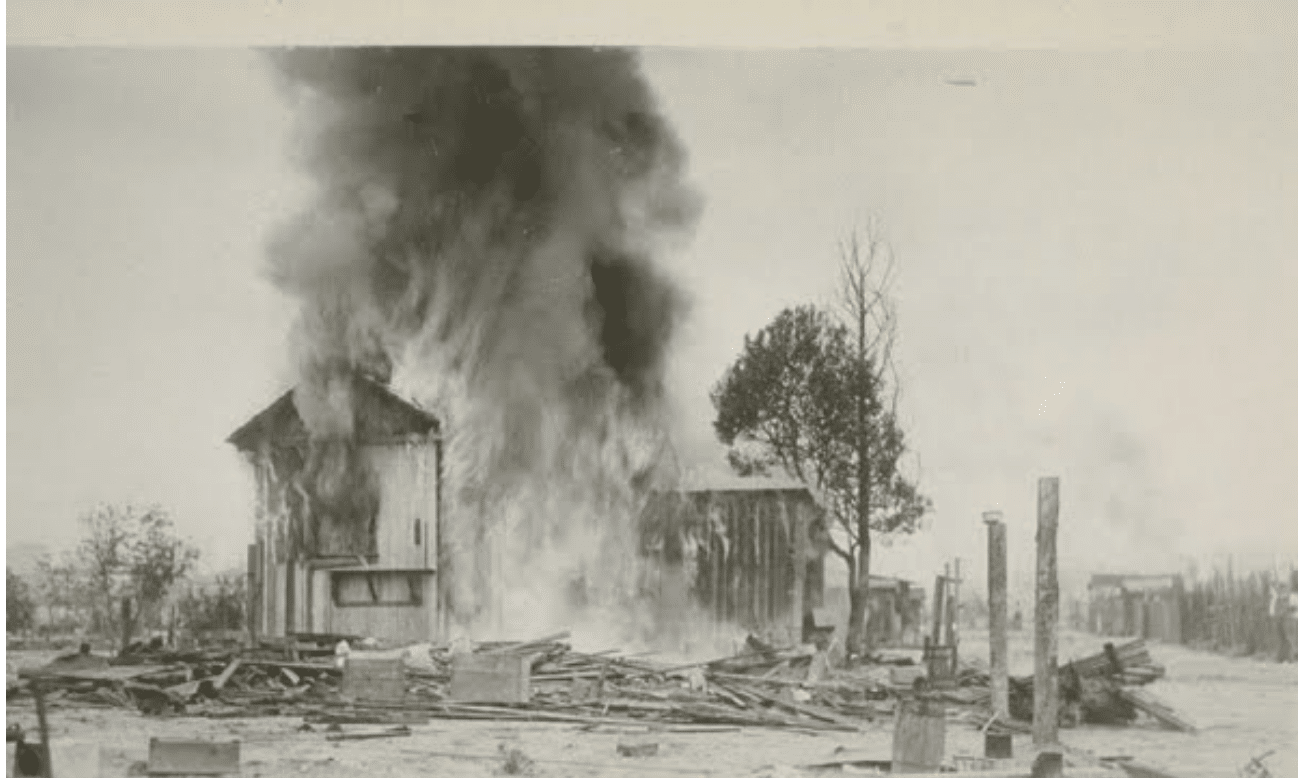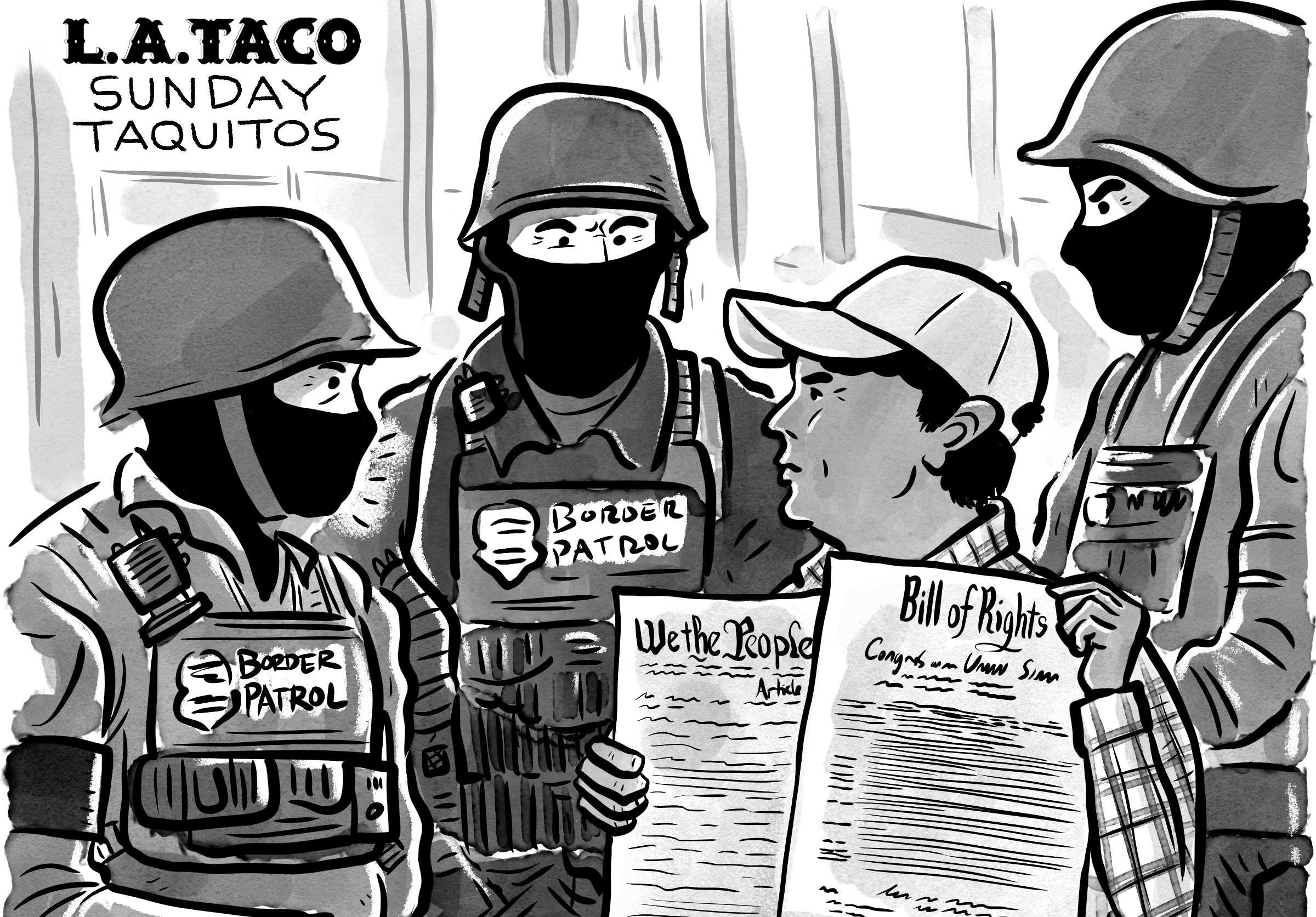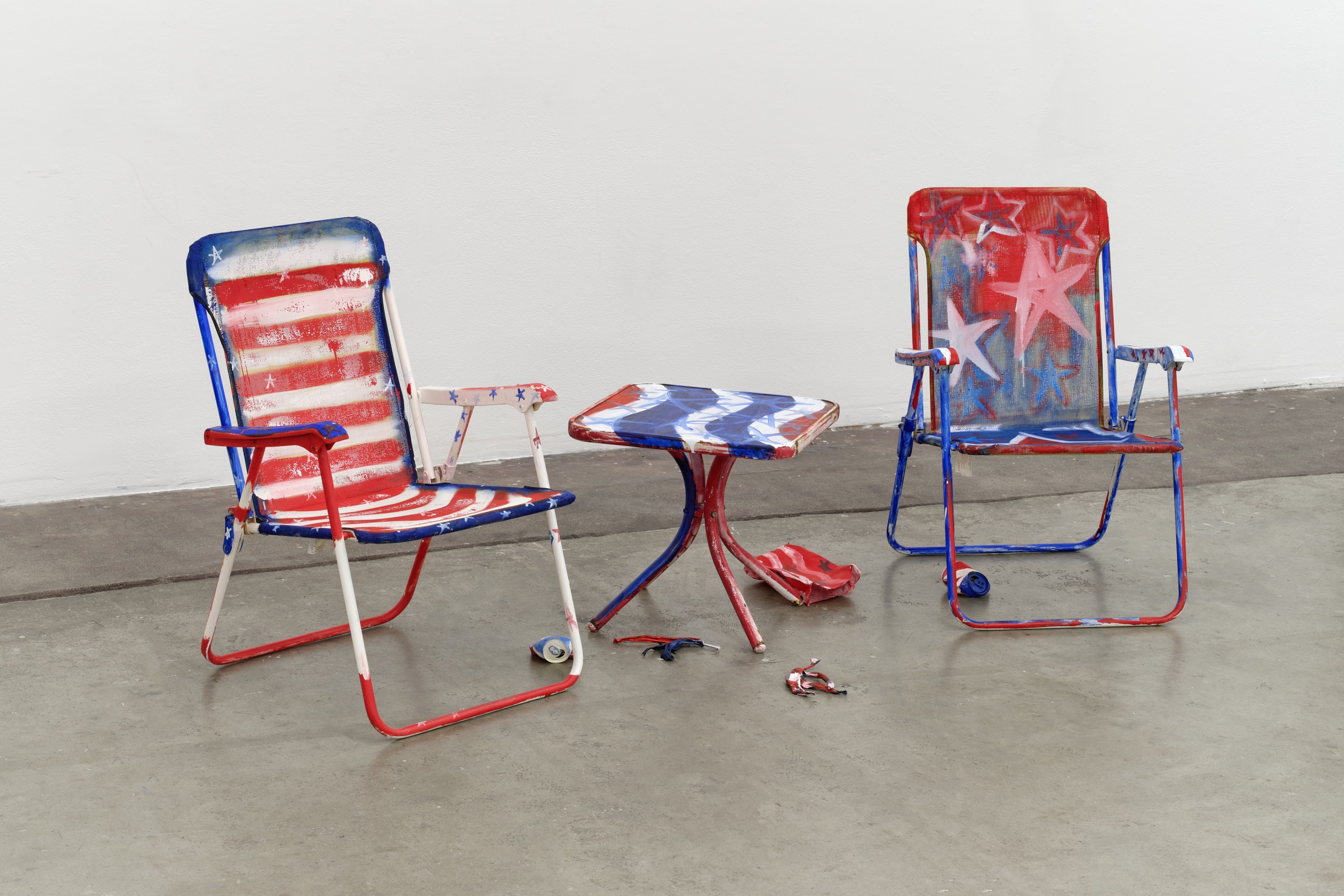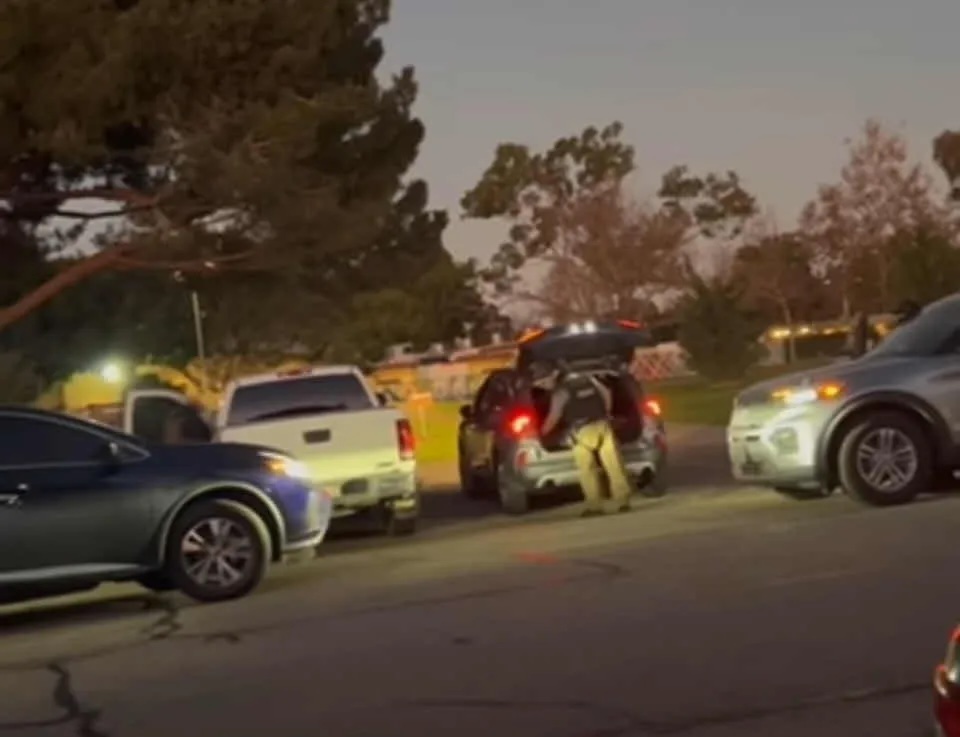It’s Fall. The year is 1924, and the Black Death has arrived in Los Angeles.
The Macy Street district, northeast of downtown L.A. near where the Twin Towers jail complex stands today, is a maze of mostly crooked tiny streets. It’s bordered by larger thoroughfares, the L.A. River, and railyards. Most streets are rarely cleaned by the city and they frequently pile up with garbage. Many aren’t even paved. An Italian dancing hall, a Buddhist temple, a Syrian coffeehouse and the homes of Mexican laborers reflect the working class district's diversity. The land gently slopes to the south and, although stunted by harmful industrial fumes, residents enjoy raising vegetables, grapes, and orchard trees.
A housing shortage has made even sheds, often with no floor or windows, suitable living quarters. Houses meant for one family have two or more living in them. Over 50 percent of the district is factories and railyards. Passing trains produce a literal black cloud that hangs over the district. Rats and other vermin devour animal carcasses in the riverbed.
From within these confines, the Macy Street district was home to an outbreak of the Bubonic Plague, a bacterial infection often caused by a rodent flea or contact with an infected animal. Known as the Black Death, the fatal disease had come to sunny Southern California.
Similar to what we have seen with the effects of COVID-19 in 2020, it's the city’s most vulnerable communities that were hardest hit nearly a century ago. Latino service workers are especially at risk of coronavirus, studies are finding. As it turns out, this marginalization existed then too, with L.A.’s low-income Mexican residents that accounted for 90 percent of plague deaths.
Something’s decomposing in Los Angeles
In late September 1924, Jesús Lujón (55) found a dead rat under a boarding house owned by family friends, the Samaranos. He’d later tell the story to the house's residents with comic effect, detailing how he tracked down the source of a foul odor.
Lujón later developed a classic sign of plague: a bubo, or discolored growth resulting from a swollen lymph node. City Health Officer Giles Porter didn’t see anything out of the ordinary when he visited the household on October 3rd. At this point, both Jesús Lujón and his daughter Francisca, known as “Concha,” were fevered with difficulty breathing. The 15-year-old’s breathing quickly devolved to a death rattle and she died on October 5th enroute to the hospital. Five days later, her father would be dead too.
The disease had spread to Jesús’s lungs, allowing the transmission to occur via cough droplets which were then breathed in by his daughter.
Lucena Samarano fell ill after caring for Francisca Lujón. Soon her and the unborn child she was carrying were both dead. A week later her husband Guadalupe and neighbor Jesse Flores, who nursed Lucena through fever, also perished. Lucena and Guadalupe’s four children would also die, as would boarders Mike and Jose Jimenez, whose blood was no longer able to oxygenate due to the disease turning their skin black before they passed.
Neighbors would begin to refer to their home as the “Death House.” Raul Samarano, a tender four years old at the time, would be the only Samarano living at 742 Clara Street to survive.
The first article run by the LA Times listed the victim's names along with their Spanish surnames and the affected area was reported as the “Mexican Quarter” despite Macy Street’s polyglot nature.
L.A. County General Hospital pathologist, Dr. George Maner, initially speculated that plague might be the diagnosis as a joke. His subordinates posited meningitis as the culprit. Speculation arose that the deadly Spanish Flu, which killed approximately half a percent of LA's population in 1918, had returned.
Dr. Maner conferred with a colleague who had treated cases of the black plague while working in the Philippines. The joke stopped being funny.
“Beautiful! Beautiful but damned!” the senior doctor exclaims after looking at a blood sample from Luciana Samarano’s cousin Horace Guitierrez.
The diagnosis came a full month after the first victim died. Disinfectant injected intravenously, along with other faulty treatments, would be used before an anti-plague serum arrived in time to be used on only one patient. It would take 37 lives total.
“Mexican Disease”
Almost a century before President Donald Trump referred to the novel coronavirus as the “Chinese Virus,” Methodist Reverend Robert Shuler, whose popular radio show spewed vile attacks against pretty much anyone that wasn’t white and protestant, made clear that the biblical pestilence that had been unleashed was “Mexican Disease.”
With a slightly more eloquent parlance, government officials and the press also made associations with the plague and Mexicans clear.
LA Times, weary of economic fallout from the publicity of the disease and preferring more innocuous names like “Strange Pneumonia,” didn’t refer to the disease by name till nearly a week after quarantine began. When they did, they made sure to also associate the outbreak with Mexicans. The first article run by the LA Times listed the victim's names along with their Spanish surnames and the affected area was reported as the “Mexican Quarter” despite Macy Street’s polyglot nature.
“The consistent marking of the diseased space as Mexican,” writes Natalia Molina, professor of Latinix Studies at USC Dornsife College of Letters, Arts and Sciences, in her book Fit to be Citizens? Public Health and Race in Los Angeles, 1879-1939, “reminded the average reader that he or she was not merely physically separated from this dread illness but socially beyond its reach as well.”
Employers across the city responded to news of the plague by firing their Mexican employees, many of whom did not even live in quarantined areas. The Biltmore Hotel in downtown Los Angeles fired all 150 of its Mexican workers within weeks of the plague's announcement. Mexican government officials and journalists would need to intervene on their behalf to get them their jobs back.
The Chamber of Commerce, whose members represented the city’s most powerful industries, worked closely with the City Council, local press, and health officials to address the plague.
“We hope that the city and the Chamber will insist that all of that area where Mexicans live is put in sanitary condition and undoubtedly there is a great deal of that area that ought to be condemned and destroyed” said Walter Dickie, secretary of the California Board of Health and head of the medical response to the plague, at a November 6th meeting of the Chamber of Commerce.
Employers across the city responded to news of the plague by firing their Mexican employees, many of whom did not even live in quarantined areas. The Biltmore Hotel in downtown Los Angeles fired all 150 of its Mexican workers within weeks of the plague's announcement. Mexican government officials and journalists would need to intervene on their behalf to get them their jobs back.
Around the same time as the outbreak, the Chamber of Commerce published Facts About Industrial Los Angeles––Nature’s Workshop which conjured images of filth and overcrowding, conditions ripe for disease, as being typically Mexican. It featured “the Typical Interior of Mexican Home”––a photo of a disorganized hovel.
Typicality is a belief in near-universal traits that are shared by a particular group and almost certainly comes at the expense of individual humanity.
“The usual litany of racist assumptions about poverty, hygiene, even religion,” describes Historian William Deverell, director of the Huntington-USC Institute on California and the West and author of “Whitewashed Adobe” which details the plague. “You don't differentiate individuality, you just kind of lump people together under ethnic identifiers.”
But it’s systemic inequality, not typical Mexican behavior, that leads to outbreaks of disease in Mexican neighborhoods said Molina.
“Inadequate supplies of basic resources: clean water, sanitary waste disposal...become factors that affect the way that disease spreads,” she said.
Quarantined in the Quarantine
At midnight on Halloween 1924, city officials descended upon Macy Street to implement a quarantine. Residents awoke the next day to find themselves roped in from the rest of the city with boundaries patrolled by a “militarized operation” of guards. They weren’t able to leave, spare some who were given permits to leave for work—essential workers of their day—and most had no idea what was going on.
Across the river, quarantine would also be instituted in the Belvedere Gardens neighborhood of East L.A. and would be overseen by County health chief, J.L. Pomeroy.
Using verbiage that seems more appropriate for the rats carrying plague rather than potential victims, Pomeroy decided to construct his quarantine in the dead of night so as to avoid “a general stampede” and later acknowledged that “we feared [the Mexicans] would scatter.”
Authorities instructed residents to wear thick clothing and to clean their homes. Gatherings were prohibited and children were kept home from school as individual families quarantined within the quarantine zone. Physicians and nurses checked in with families house to house, shouting from the street to ascertain whether anyone had symptoms.
One woman had her sewing machine requisitioned by guards who later broke it. Benigno Guerrero’s “Quality Tamale House” in Belvedere Gardens was looted.
Macy Street Grammar School principal Nora Sterry, against protests from officials, snuck past quarantine guards and repurposed her school to distribute food to families and provide public showers. She even organized local musicians to serenade the quarantined residents at night. A social justice visionary, Sterry would advocate public health reform based on her experience in the Macy Street district and serve on the Los Angeles County Board of Education.
Guards were placed on eight-hour shifts. Despite orders not to shoot, some made a sport of killing stray animals.
Destroyed by guards in need of firewood, one resident lost “half of the rear of [his] house” and was later compensated for damages. One woman had her sewing machine requisitioned by guards who later broke it. Benigno Guerrero’s “Quality Tamale House” in Belvedere Gardens was looted.
Despite marauding guards and racist attitudes, the quarantine itself seemed to have been successful in keeping infection rates low. San Francisco officials waffled on quarantine when they had an outbreak of the plague in 1900 and infections there would occur intermittently for four years as the disease took 119 lives.
An anti-plague serum finally arrived in Los Angeles on November 5th but records show it was only used in one case. Quarantine was lifted on November 13th. Only two of the five quarantined areas had a verified connection to the plague. The other three only had verified instances of substandard housing occupied by Mexicans.
Slash-and-burn
A rat eradication program targeting the harbor and the Mexican District followed. Structures were arbitrarily declared public nuisances, ransacked of their furnishings, and either fumigated or burned down. Others were lifted 18 inches off the ground and had the side paneling removed so stray cats and dogs could get underneath and kill the rats. Small-caliber gunshots could be heard throughout the city and county as exterminators went about killing rats and ground squirrels.
By the end, the effort looked more like a program of a slum clearance than rat eradication. Nine days into the campaign, not a single rat tested positive for plague, however by the end of the program about 2,500 buildings were destroyed. Around half of the destroyed structures were the homes of Mexican laborers. The City did not compensate the displaced residents and no one was rehoused.
“Burning down those neighborhoods (is a) pretty brutal weapon of eradication,” said Deverell. “I suppose in the most crude sense, it probably worked, but it's also a racial cudgel.”
“These areas are stigmatized,” Molina said, “[The poor living conditions are] ascribed to these ethnic minorities, and therefore seen as something that's worthy of [a] slum clearance project,” she continued.
“The plague really solidifies [Mexican Americans] as different, as suspect, as unfit to be citizens...”
Slum clearance projects continue through the decades. In the 1930s, Chinatown was knocked down for Union Station. Around ten thousand residents along the east side of the L.A. River were displaced for the East Los Angeles Interchange in Boyle Heights, and around 1,800 Mexican residents of Chavez Ravine, the current site of Dodger Stadium, were displaced in the 1950s for new housing construction that never occured.
Aftermath
The occurrence of plague revealed deep inequalities in Los Angeles, as it is today, segregated by class and ethnicity.
“Pandemic creates new fissures, there's no doubt about it,” said Deverell. “But they sure are powerful agents in revealing the divides that we (already) have in society.”
At the outset of the 1924 plague outbreak in Los Angeles, Mexicans were separated in terms of the kind of work they did and where they lived. Most worked in manual labor and lived separate from White Angelenos.
“The plague really solidifies [Mexican Americans] as different, as suspect, as unfit to be citizens,” said Molina.
The same year plague hit Los Angeles, the Immigration Act of 1924 passed congress which placed restrictions on the number of immigrants allowed in from southern and eastern Europe and completely barred immigration from Asia.
“These communities are demeaned and yet they're now seen as essential. Begging the question: How can a community that is seen as deportable and illegal now be seen as essential?”
Mexicans were spared due to lobbying from industries reliant on Mexicans for cheap labor but the timing of the two incidents fostered burgeoning scientific racism that classified Mexicans as nonwhite.
“There [is] a campaign to make sure that Mexican immigration is limited and medical racialization plays a key role,” said Molina. “There's a revival of biological racism to show that (Mexicans) are different.”
Public health will become central to the eventual political mobilization of Mexican-Americans in LA. Edward Roybal, elected in 1949 as the L.A. City Council’s first Mexican member in nearly one hundred years, began his career as a social worker and ran on addressing the environmental racism that led to the plague and other public health problems that disproportionately affected Latino Angelenos.
Nonetheless, public health inequities persist as those charged with providing essential labor are also those with the least amount of legal protections and economic resources. Undocumented agricultural workers, for instance, are ineligible for unemployment or federal relief checks but are critical to supply chains and at high risk for contracting COVID-19. This is not the first time this historical inequality has been documented, Curbed LA also brought this to the spotlight in April.
Referring to the hypocrisy, Molina said, “These communities are demeaned and yet they're now seen as essential. Begging the question: How can a community that is seen as deportable and illegal now be seen as essential?”







